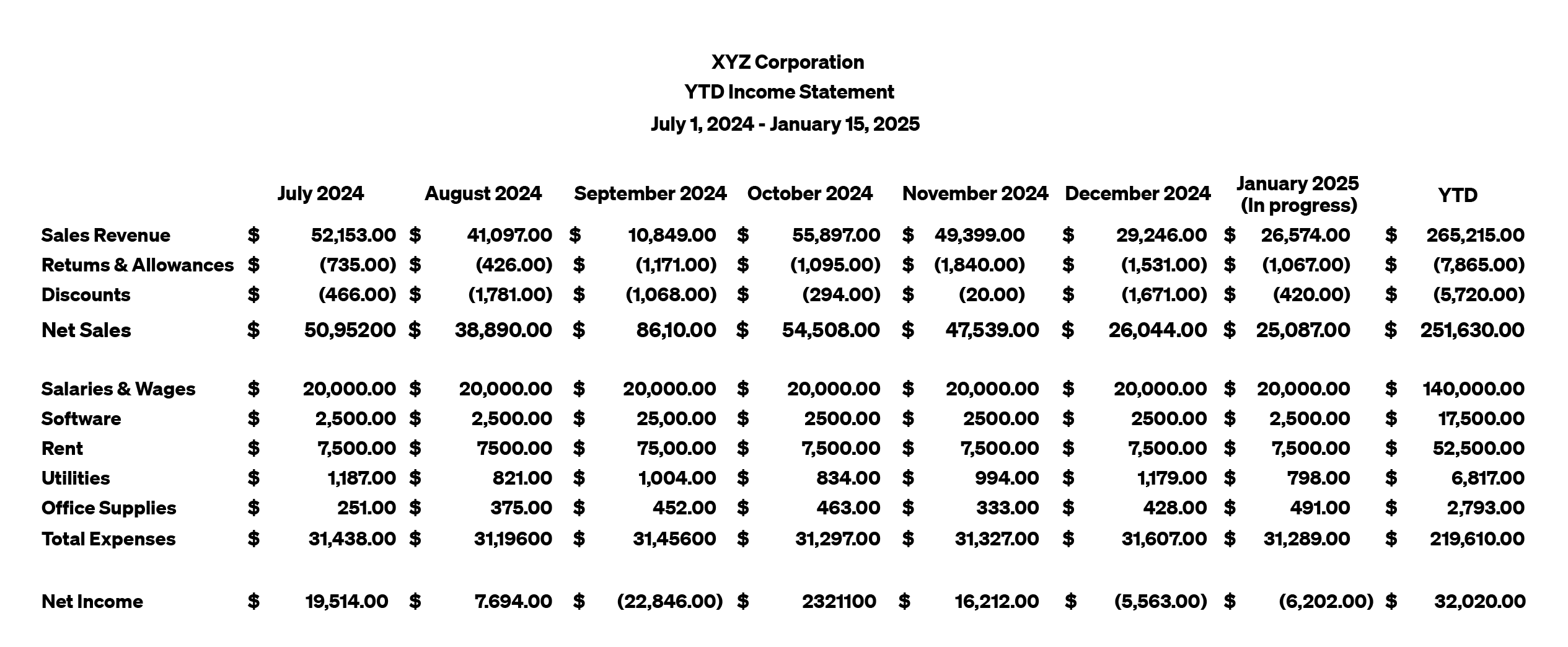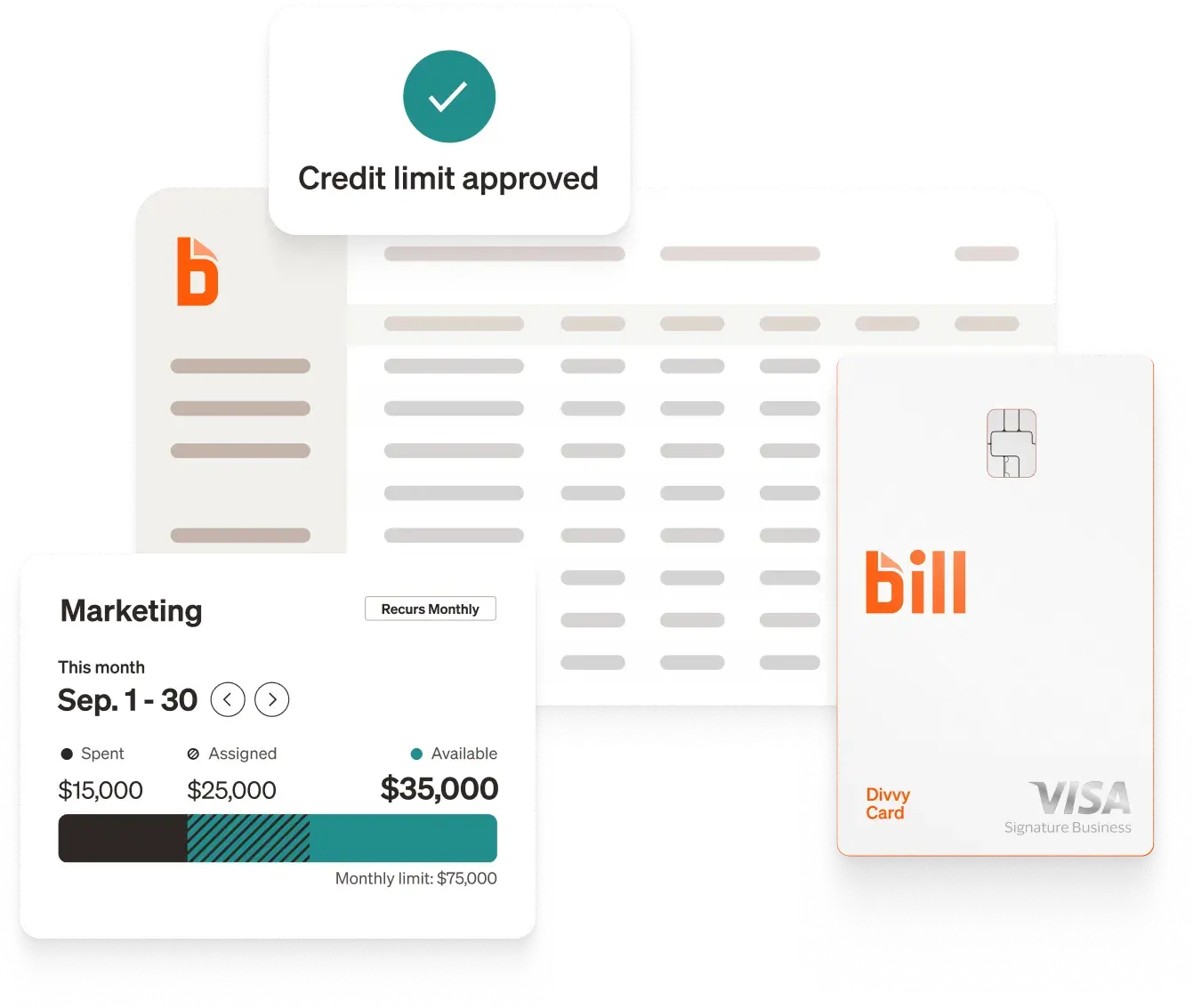Businesses need to always keep a pulse on the performance to ensure they’re staying profitable and hitting their targets.
Often, these targets are set for the same 12-month period or year. This is because they close their books and file taxes for that same period.
When checking in on performance, it’s good to look at year-to-date (YTD) measurements. Here’s what you need to know about what that is, why it’s important, and how to measure it.

What does YTD mean?
Year to date or YTD refers to the time between the beginning of the calendar year or fiscal year and the present day. It is a common metric in accounting and bookkeeping, and also useful for analyzing business trends and comparing performance data with competitors or the industry as a whole.
Usually, YTD is used to describe a set of information, such as YTD sales, YTD revenue, or YTD salary.
YTD vs MTD
MTD stands for month-to-date, covering all activity from the first day of the month to the last completed day. If the current date is March 15, the MTD period is March 1 to March 14.
Just like YTD, MTD is used to look at a set of information up to a certain date. However, it’s looking at a shorter period of time.
Businesses would use YTD to track progress towards their goals for the calendar or fiscal year while they would use MTD to track progress towards goals for the month.
Businesses that deal with high seasonality would benefit most from incorporating MTD tracking. For example, an outdoor equipment company with low sales in the winter would have poor YTD tracking in February, but the MTD progress would give a better picture of how they’re performing.
How is year to date used?
YTD can refer to the calendar year to date or the fiscal year to date. The calendar year to date refers to the time period between January 1 and the current date, and a fiscal year to date refers to the time period between the beginning of the fiscal year and the current date.
Year to date information can be used to understand a company’s earnings, net pay, or investment returns before the year is over. The YTD financial statements can be analyzed to determine the financial health of the business and how it compares to other similar companies.

Calendar year to date vs. fiscal year to date
Businesses have the option to do their annual reporting and tax filing on either a calendar year or fiscal year.
Calendar years always run from January 1 to December 31. With a fiscal year, the business chooses the start and end date so long as it covers a 12 month period.
The reasoning for choosing a fiscal year is to have a reporting period that better matches the natural business cycle. An example is schools that choose a fiscal year of July 1 to June 30 so it matches the timing of tuition payments.
Most small businesses use the calendar year because it’s easier to understand, but you may want to discuss the option of using a fiscal year with an accountant.
Who uses year to date?
YTD information is useful for:
- Business owners
- Financial planning and analysis teams
- HR and payroll
- Investors
Business owners
Anyone who wants their company to be successful usually keeps track of YTD information to measure the financial health of the company. This can be useful at any given time, but particularly during unusual circumstances, such as mergers or industry changes.
Financial planning and analysis teams
YTD data is an important component of budgeting and forecasting, as well as accounting purposes. FP&A teams can compare YTD expenses to previous years to see if spending is on track or they need to adjust their annual budget.
HR and payroll
Knowing how much the company has spent YTD on factors such as gross pay, net pay, deductions, and benefits can help HR and payroll teams make smarter decisions.
Investors
Publicly traded companies can share their YTD data with global finance markets to help investors understand the company’s performance. Investors in smaller businesses are also often interested in YTD information, as it can indicate whether company finances are running smoothly, and what the YTD return on an investment would be.
The benefits of YTD reporting
On top of looking at financial reporting in a completed period, here’s why you should also incorporate YTD reporting.
Reviewing progress to goals
It’s common practice to set goals for the year and YTD is used to see how the business is tracking towards those goals. Looking at YTD performance helps identify trends early and make adjustments to strategy, maximizing the chances of hitting the goals.
Use in forecasting yearly performance
YTD metrics are used in rudimentary forecasting to get an estimate of where the business will be at the end of the year.
Start with your YTD revenue and expenses. Divide these amounts by the amount of days covered in the YTD period then multiply the result by 365 (or 366 in a leap year).
The result is a rough forecast of what the business’s revenue and expenses will be at the end of the year. The caveat is that this won’t capture any seasonality and assumes consistent performance.
Reducing the influence of seasonality on performance metrics
As the year goes on, the YTD performance captures more of the ebbs and flows the business faces. This mutes some of the effects of seasonality.
If the business notices a short-term trend, it can recontextualize it by looking at the YTD performance and how it looks in the bigger picture.
When should businesses look at YTD reporting?
If you’re considering using YTD reporting, these are the best times to do so.
Monthly or quarterly reviews
After closing the reporting for a month or quarter, also check in on the YTD reporting. This extra step helps to identify emerging trends and contextualize the period’s performance in the overall year.
Tracking progress on budgets
If the business has a budget for the year, tracking YTD progress to those numbers shows whether there’s more or less room for spending going forward.
It’s also helpful looking at YTD spend levels come the end of the year to get estimates for the year following. If the business is using the calendar year, reviewing spend levels in November or December helps to build a budget for the year following.
Reviewing performance against forecasts
Similar to tracking progress on budgets, comparing actuals against the set amounts, businesses should do the same against a forecast. Doing so shows whether they’re on pace to hit targets and whether a change in approach is necessary to maximize performance.
How to calculate year to date
In many cases, YTD calculations can be done with simple addition. Calculating year to date expenses involves adding up all of the expenses from the beginning of the year until the current day. Finding your YTD profits requires adding up all profits since the start of the year. To get started on either of these figures, refer to your company’s profit and loss statement.
From there, you can compare the current YTD information with data from previous years at the same date.
For more complicated calculations, such as interest or yield figures, you may need to turn to business finance software for exact results.
Year to date example
A company wants to look at their YTD performance. They’re using a fiscal year starting on July 1 and the date they’re looking at is January 15.
To look at the YTD figures, they generate an income statement for the period, which you can see below.

With this income statement, they can compare:
- Sales revenue against their forecast or projections
- Expense levels compared to a budget
- Performance against prior periods
- Their profitability to date and capital available for investment
Tracking YTD performance with BILL
Set targets and stay on track to your goals with BILL’s full suite of financial tools.
By combining accounts payable, accounts receivables, and expense management in one powerful platform, your business will be equipped with the tools needed to forecast cash flow, stay on top of revenue, control spending, and increase overall efficiency.
Leveraging integrations and automation, you get access to real-time data that gives you visibility into every aspect of the business’s revenue and spending, all without having to lift a finger.
Reach out for a demo to learn more about how BILL can revamp your financial management and reporting.








